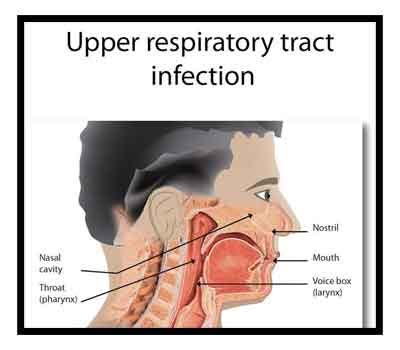- Home
- Editorial
- News
- Practice Guidelines
- Anesthesiology Guidelines
- Cancer Guidelines
- Cardiac Sciences Guidelines
- Critical Care Guidelines
- Dentistry Guidelines
- Dermatology Guidelines
- Diabetes and Endo Guidelines
- Diagnostics Guidelines
- ENT Guidelines
- Featured Practice Guidelines
- Gastroenterology Guidelines
- Geriatrics Guidelines
- Medicine Guidelines
- Nephrology Guidelines
- Neurosciences Guidelines
- Obs and Gynae Guidelines
- Ophthalmology Guidelines
- Orthopaedics Guidelines
- Paediatrics Guidelines
- Psychiatry Guidelines
- Pulmonology Guidelines
- Radiology Guidelines
- Surgery Guidelines
- Urology Guidelines
ICMR Antimicrobial Guidelines for Upper Respiratory Tract Infections

The upper respiratory tract infections (URTI) are mostly due to viral infections and therefore role of empirical antibiotics is limited. In pharyngitis a throat swab is collected but in other conditions mostly sampling for culture is not possible and not routinely done.
Indian Council of Medical Research, Department of Health Research has issued the ICMR Antimicrobial Guidelines for Upper Respiratory Tract Infections. Following are the major recommendations :
Otitis Media
Case Definition : It is an infection or inflammation of the middle ear.
Common bacterial pathogens : Streptococcus pneumoniae, Haemophilus influenzae, Moraxella catarrhalis.
Investigations
Tympanocentesis is not required. Usually it is an empirical therapy. It is important that if there is a perforation we realize that it is likely the organism isolated is a colonizer, and treatment based on that will not be appropriate..
Prevalent Resistance
S. pneumoniae in India is susceptible to penicillin (usually < 4 %) and so β Lactams can be given.
H. influenzae and M. catarrhalis produce β Lactamase (around 23% and 73% respectively) and need treatment with amoxycillin-clavulanic acid.
Bacterial Sinsitis
Case Definition : This is an infection of the sinuses.
Common pathogens
Viral etiology is more common and amongst bacteria common causes are Streptococcus pneumoniae, H. influenzae , Moraxella catarrhalis. If symptoms are < 10 days in duration and resolving, there is no need for antibiotics.
Investigations
These are not helpful as there is lack of a simple diagnostic test. Diagnosis is clinical. Xray PNS is done usually only if there is a chronic sinusitis to look for a fluid level. Bacterial etiology is same as in otitis media. If duration of illness is >10 days with purulent nasal discharge, nasal obstruction and facial pain, then a bacterial cause should be considered
Prevalent Resistance
S. pneumoniae in India is susceptible to penicillin (usually < 4 %) and so β Lactams can be given.
H. influenzae and M. catarrhalis produce β Lactamases (around 23% and 75% respectively) and need treatment with amoxycillin-clavulanic acid.
Acute Pharyngitis
Case Definition : This is an infection or inflammation of the pharynx or tonsils.
Common Pathogen
Viruses cause the majority of these infections. Amongst bacterial causes, Group A Beta Hemolytic streptococci is responsible for pharyngitis. Other bacteria to worry about are Fusobacterium necrophorum which can cause Lemierre’s syndrome and Corynebacterium diptheriae which causes a membranous tonsillitis causing respiratory compromise and other manifestations like myocarditis.
Investigations and Treatment
A throat swab is collected (if possible 2 swabs should be collected) using a sterile cotton swab, under direct visualisation without touching the tongue or buccal mucosa. The swab should be transported to the lab at room temperature. Most often no treatment is required. But if the patient is febrile for more than 3 days with pus points on tonsils, painful cervical lymphadenopathy only then a short course of antibiotics may be warranted.
Prevalent Resistance
S. pyogenes remain sensitive to Penicillin/Ampicillin. The reports on erythromycin resistance from India are now increasing (>45%) and therefore antimicrobial susceptibility should be done.
Rarely follicular tonsillitis and peritonsillar abscess may occur due to Staphylococcus aureus and can also present as URTI. This should be confirmed with culture and antibiotic to be given accordingly.
Table 1 Table for AMA regimen
| Condition | Common pathogens | Empiric antibiotics (presumptive antibiotics) | Alternative antibiotics | Comments |
| Acute pharyngitis | Commonly viral. Common bacterial cause is Streptococcus pyogenes | None required Oral Penicillin V 500 mg BD or Amoxicillin 500 mg Oral TDS for 7 days | In case of penicillin allergy, Azithromycin 500 mg OD for 5 days | As most cases are viral no antimicrobial therapy required Erythromycin resistance from India reported |
| Acute bacterial rhinosinusitis | Streptococcus pneumoniae, H.influenzae, M. catarrhalis | Amoxicillin-clavulanate 1gm oral BD for 7 Days | Azithromycin 500 mg OD for 5 days. Ciprofloxacin 500 mg BD for 7 days | If nasal discharge headache or cough persisit antibiotics are indicated. |
| Acute otitis media | Streptococcus pneumoniae, H.influenzae, M. catarrhalis | Amoxicillin clavulanate 1gm oral BD for 7 days | Azithromycin 500 mg OD for 5 days. Ciprofloxacin 500 mg BD for 7 days | Ear discharge swab may isolate colonizer |
| Acute bronchitis | Viral | Antibiotics not required | ||
| Ludwig’s angina Vincent’s angina | Polymicrobial (Cover oral anaerobes) | Clindamycin 600 mg IV 8 hourly or Amoxicillin clavulanate 1.2 gm IV | Piperacillin tazobactam 4.5 gm IV 6 hourly | 10-14 days and then can be prolonged based on response. |
Note
Diphtheria may be present in rare cases but due to universal immunization is not included in differential diagnosis unless specific history, symptoms and signs are suggestive.
All these regimens need to be tailored according to susceptibility patterns at individual centers
Guidelines by Indian Council of Medical Research :
Dr Soumya Swaminathan, Director General, Indian Council of Medical Research Secretary, Department of Health Research

Disclaimer: This site is primarily intended for healthcare professionals. Any content/information on this website does not replace the advice of medical and/or health professionals and should not be construed as medical/diagnostic advice/endorsement or prescription. Use of this site is subject to our terms of use, privacy policy, advertisement policy. © 2020 Minerva Medical Treatment Pvt Ltd